TOKYO, JAPAN — What is your image of Generation Z? “Apathetic, self-absorbed and addicted to social media?” If so, you may want to think again! The Hakuhodo Institute of Life and Living ASEAN (HILL ASEAN) recently presented highlights of an extensive research project on the lives and values of this often misunderstood and very important emerging market, the ASEAN Generation Z (ASEAN Gen Zers).
The title for HILL ASEAN’s seventh annual forum, and the second to be held online, was “Now you Z me: Debunking myths about ASEAN’s Generation Z.”
More than 1300 people joined from Thailand, Indonesia, Philippines, Malaysia, Vietnam, Singapore, Cambodia, Hong Kong and Japan to hear HILL ASEAN representatives from all over the region talk about what makes Gen Zers tick.
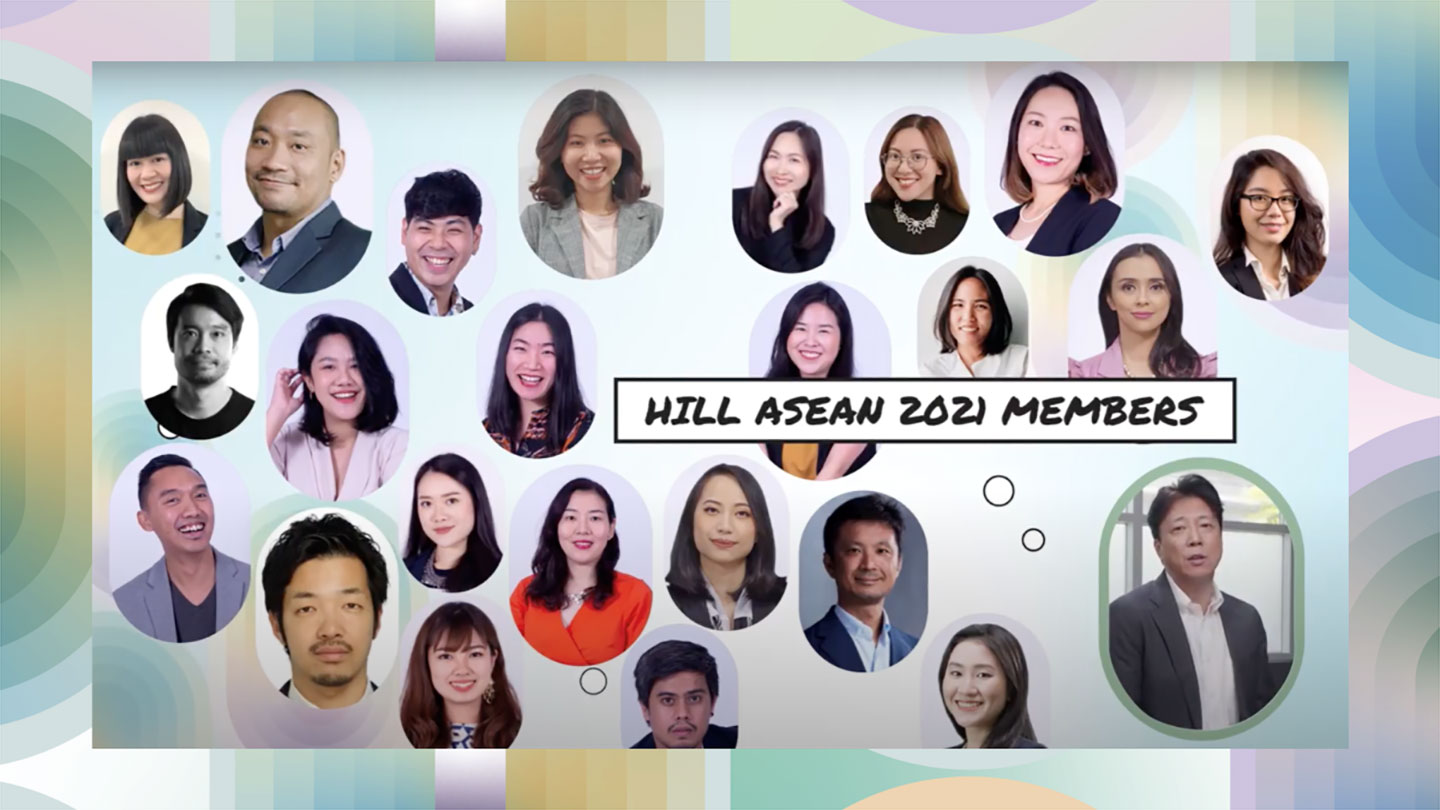
Hakuhodo’s strengths
Hideaki Sato, the Regional Chief Operating Officer for Southeast Asia Operations at Hakuhodo International, kicked off the proceedings and welcomed everyone to the forum. Hideaki reminded viewers of how Hakuhodo continues to utilize its three major strengths to deliver top results for clients during this difficult time:
1) Their business is centered on the two core philosophies of Partnership and Sei-katsu-sha Insight, whereby Hakuhodo is working hand-in-hand with clients to win the hearts of sei-katsu-sha (“living people”).
2) They have a global network of over 10,000 people in more than 20 countries and regions, and can offer diverse functions as an integrated marketing solutions company with strengths in digital, activation and PR.
3) They can utilize data for business creation, providing solutions that lead to sales growth and marketing success for our clients.
Then it was time to introduce HILL ASEAN and the latest study. “We draw on the employees of our ASEAN companies as our researchers, providing insights using creative ethnography with various sei-katsu-sha in ASEAN,” Hideaki said, as he invited viewers to join the speakers on a journey of discovery about the Gen Zers.
Generation gaps and misunderstandings
The next speaker was the Institute Director of HILL ASEAN, Devi Attamimi from Indonesia.
Devi pointed out that many ASEAN countries are youthful and fast-growing, and thus have a much larger Gen Z population than other regions. HILL’s seventh comprehensive study gets to the heart of who ASEAN Gen Zers are and why brands should care about this up-and-coming economic force.
She asked viewers to take a moment to check their own generational status. Gen Z in ASEAN refers to the generation born between 1997–2012 and ranging in age from 9 to 24 in 2021. They make up around 24% of the population. Millennials, or Gen Y, were born between 1981 and 1996, while those born between 1965 and 1980 belong to Gen X. The next generation back are the baby boomers.
Devi then explained that Gen Z have grown up “in a more connected, open, diverse and borderless world, amid strong economic growth and where the internet and social media have always been part of their lives.” Moreover, older generations tend to hold misconceptions about Gen Zers. “These stereotypes paint them as a generation that is apathetic, extremist, individualistic and overly obsessed with social media,” she noted.
HILL ASEAN embarked on an almost year-long study in six ASEAN countries to get the real story, and Devi rounded out her section by showing a video montage of the research conducted with Gen Zers in Thailand, Vietnam, Singapore, Malaysia, Indonesia, and the Philippines.
Myth 1: Personal values
Next up was Kristel Pauline “EQ” D. Palines, Senior Brand Planner and Researcher from IXM in the Philippines—and, incidentally, the sole Gen Zer among all the speakers. “We’ll be tackling three myths and I’ll start off with the first: “Gen Zers always put themselves first. They’re apathetic and don’t care,” EQ said.
The truth is that personal connections with both family and close friends matter greatly to ASEAN Gen Zers. Many of them have been raised by Gen X parents, and they enjoy a more casual and friendly parent-child relationship than Gen X did with their own parents.
EQ added that Gen Zers have been “Gencouraged,” as they’ve grown up to question things and have a point of view, becoming a group of independent thinkers. Yet perhaps because of these traits, older generations have saddled Gen Zers with labels like “Gen Me” (self-absorbed) or “Gen Zzzz” (apathetic), when the reality is quite different.
HILL ASEAN’s research has revealed that Gen Zers value education, and that their family and friends come first. In fact, 67% of the participants said, “Success is making my friends and family proud,” in comparison to 58% for Gen Y.
In wrapping up her section, EQ offered this perhaps surprising observation on what makes ASEAN Gen Zers happy: “Harmony with all”—self, family and the community—while also staying true to themselves.
Myth 2: Life values
Krittamate “Pae” Wuthimatheekul, Senior Strategic Planner for Delphys Hakuhodo (Thailand), took over to explore the second myth about Gen Z: “Gen Zers are complex and extreme. They prioritize individuality over society.”
Members of Gen Y and Gen Z were asked to draw pie charts of important aspects of their lives. Although Gen Y generally had a large number of things they prioritized, Gen Z showed a surprising tendency to prioritize stability, family, and inner peace in their charts: “Happiness equals success” for Gen Zers.

“Life is not just about their own happiness. The happiness of others around them is just as important,” Pae pointed out. In other words, “Happy you, happy me.” This is further supported by the fact that the percentage of ASEAN Gen Zers who agreed with the statements “life is about fulfilling responsibility to others” and “life is about self-love” were exactly the same at 86%.
“Don’t worry, be happy” was another key theme for Gen Zers, who value a stress-free life and place priority on mental health above money.
Careers are important to them, of course, but “a great career must be both realistic and stable.” In contrast to Gen Y, who are often said to be “dreamers,” Gen Z’s view on careers resembles that of Gen X, and manifests as a desire to make their parents happy and have the means to take care of them.
Finally, “success is happiness” for Gen Zers, who are not necessarily concerned with achieving status or fame. “So, in terms of Gen Z’s life values, it revolves around the core value that happiness itself is success. Everything is related to their happiness, and the happiness of those around them,” said Pae.
Looking beyond brands
Pae then turned to the topic of consumption style. There is no doubt that Gen Zers are avid shoppers, but is it accurate to label them “super-materialistic or super-emotionally driven” in their consuming behavior? Actually, Gen Zers are more rational shoppers than people give them credit for.
“They value product practicality and functional benefits, and have a strong desire to own things,” Pae said. Being very familiar with online reviews and comments, they look beyond brands and also prefer to own over renting. However, this does not mean they have no interest in the emotional value of brands.
Gen Zers are more demanding of brands, but willing to pay extra for those that undertake conscious actions—10% more for brands that win their hearts. “In terms of brand consumption, Gen Zers are rational shoppers who are purpose-driven,” Pae explained in closing.
Myth 3: Media and social networks
The next speaker was Suthawan “Nui” Pittawong, Strategic Planning Manager for Hakuhodo Bangkok, who addressed the stereotype that “Gen Z are overly dependent on social media.”
The truth is that this generation uses various social media platforms for different purposes: Facebook is for catching up on news, Instagram is for a virtual diary of their doings, Twitter is for sharing information in real-time, and finally, TikTok is for entertainment and content creation.
ASEAN Gen Zers create different profiles for different media, but this is to display various sides of their personalities—and not to be “fake.” “You can see that they want to compartmentalize not just for their own sake, but also to abide by the ‘unspoken rules’ of each app to keep the harmony between them and their peers, even in social networks,” Nui explained. These net-savvy young people also use social media for creating change and raising awareness about things and social issues they care about.
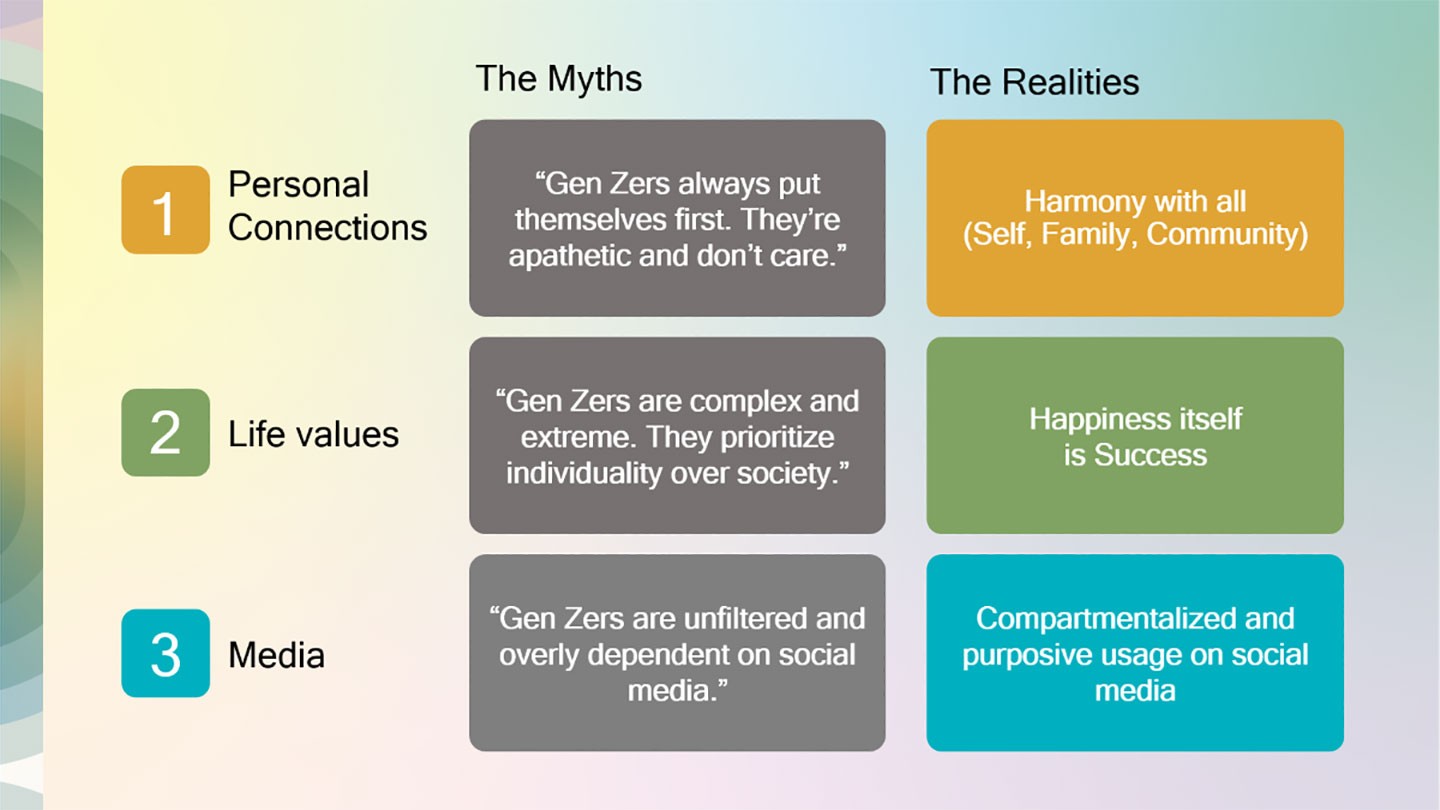
Meet the SynergiZers
Alicia Soehardjono, Strategic Planning Manager from Lotus:H in Indonesia, then took the floor to ponder the burning question—have Gen Z been misjudged?
She examined the evidence from the HILL ASEAN research:
・They are not apathetic.
・They desire happiness for themselves, harmonized with others around them.
・They are not overdependent on social media but compartmentalize their use of it.
・They know how to leverage social media.
In other words, Gen Zers were raised to be critical and well-informed. They are aware of the realities of their lives, while also desiring universal harmony. They are invested in the symbiotic relationship with fulfilling one’s self in order to fulfill others.
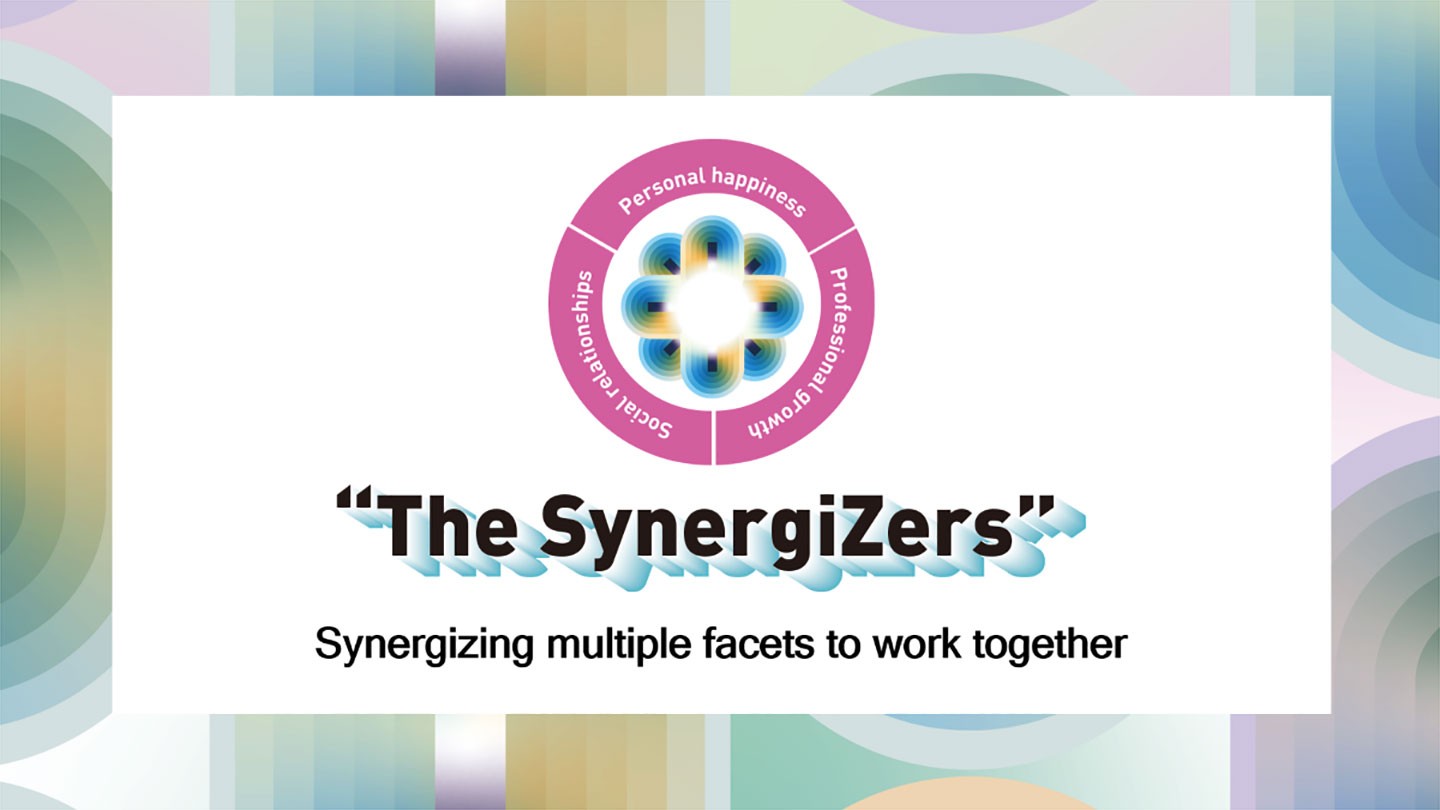
Alicia then introduced the audience to the concept of ASEAN Gen Zers as the SynergiZers: “With the ultimate aim of universal harmony, they synergize the harmony between themselves, their families and society,” she explained. “(They are) fulfilled in their personal and professional goals, but still maintaining the peace with their peers and the community.”
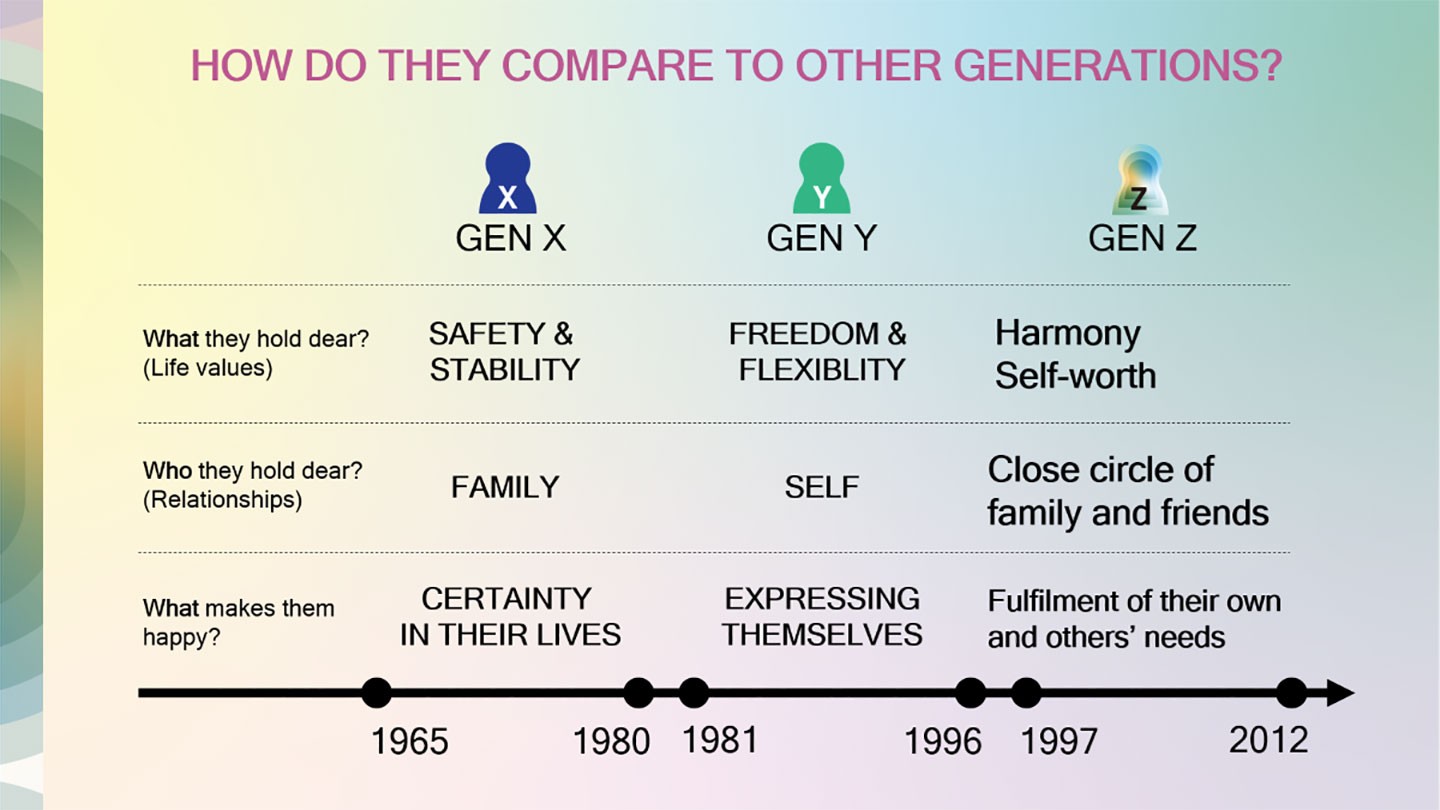
An interesting comparison between Gen Z and the two proceeding generations reveals the following: In terms of life values and relationships, ASEAN Gen X hold “safety and stability” and “family” dear, and gain happiness from “certainty in their lives.” On the other hand, for ASEAN Gen Y it’s all about “freedom and flexibility” and “self,” while “expressing themselves” brings happiness. Alicia pointed out that when it comes to Gen Z, they hold dear “harmony and self-worth” and their “close circle of family & friends.” In line with this, Gen Zers gain happiness from “fulfillment of their own and others’ needs.”
Successfully synergizing with Gen Z
Emmanuel James G. “EJ” Mangahas, the CEO of Hakuhodo Digital Vietnam, then addressed the vital topic of how marketers can interact and synergize successfully with this dynamic new generation.
“The first thing to remember is, as brands, we must actively become inclusive and embrace the values the Gen Zers hold dear, making sure that no one gets left behind by practicing ‘embraZive marketing’,” said EJ. Taking a cue from Gen Zers, brands should embrace multifaceted “courageous communication” and not be afraid to show their different sides.
Next, EJ encouraged brands to co-create and team up with Gen Zers, who are passionate about their causes and points of view. However, bear in mind that no-frills communication will get to their hearts through appealing to their rational minds. “Honest and simple communication is appreciated,” he advised.
“This would surely pave the way for our brands to create meaningful synergy with the most important consumer segment in ASEAN in the coming years,” EJ said in summing up.
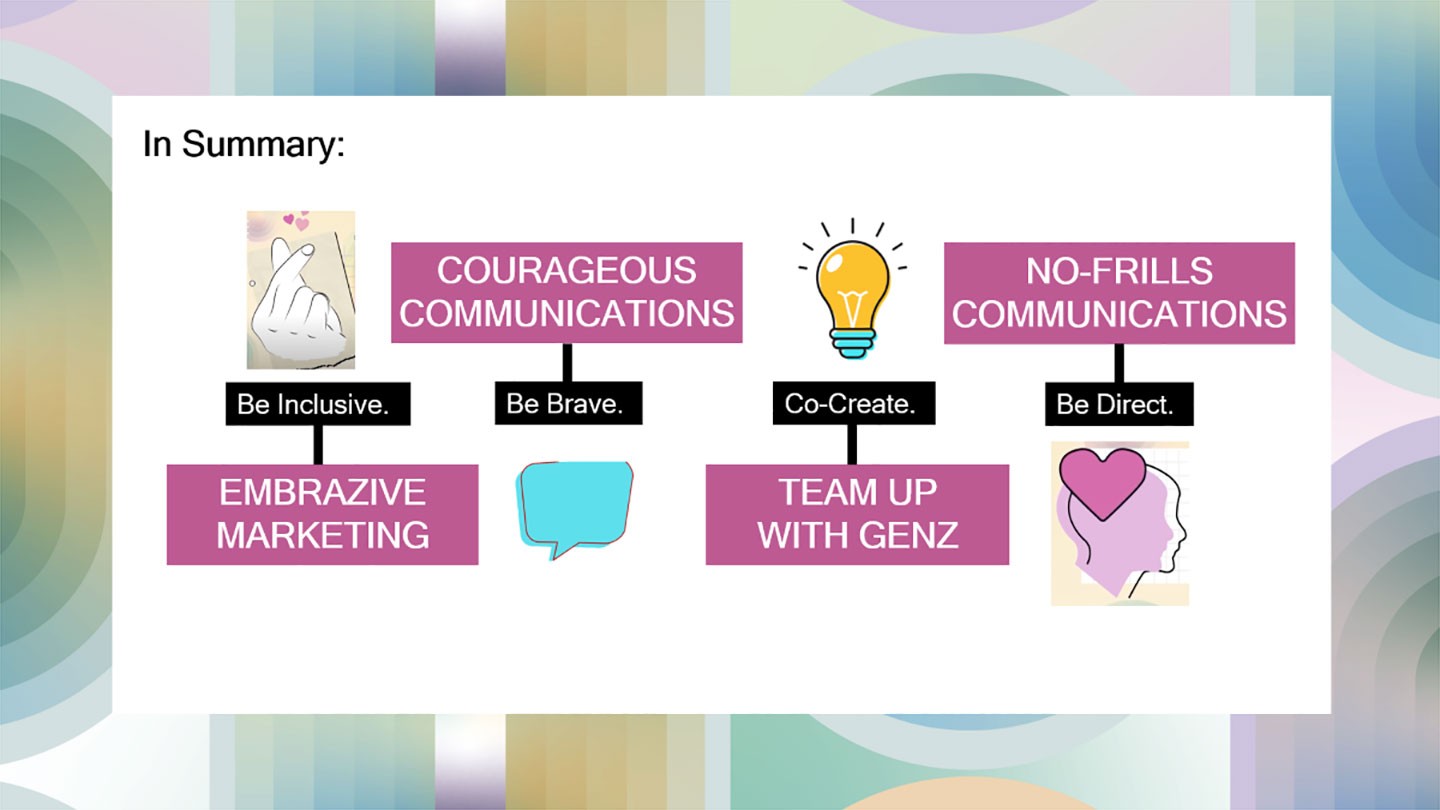
Hakuhodo’s solutions
The last speaker was Yuko Ito, Managing Director of HILL ASEAN. Yuko talked about ways to engage with these so-called SynergiZers with “Hakuhodo’s ASEAN Gen Z Solutions”: These consist of four solutions, two for understanding, and one each for connecting and synergizing.
Firstly, in order to understand them, HILL ASEAN has research data on Gen Zers. “We can provide you with deep insights from our quantitative surveys and interviews,” Yuko said. “In addition to digging deeper into insights through surveys, we also have solutions for finding sei-katsu-sha insights from big data.” Furthermore, in terms of connecting with Gen Z, Hakuhodo has created an online group of ASEAN Gen Zers that clients can tap into as a resource.
Finally, Hakuhodo has a unique tool called the “4P Framework” for purpose branding and synergizing, namely: Purpose— a brand’s reason for being; People— who will identify with it; Plot— the story you want to tell; Program— designing ways to experience the plot.
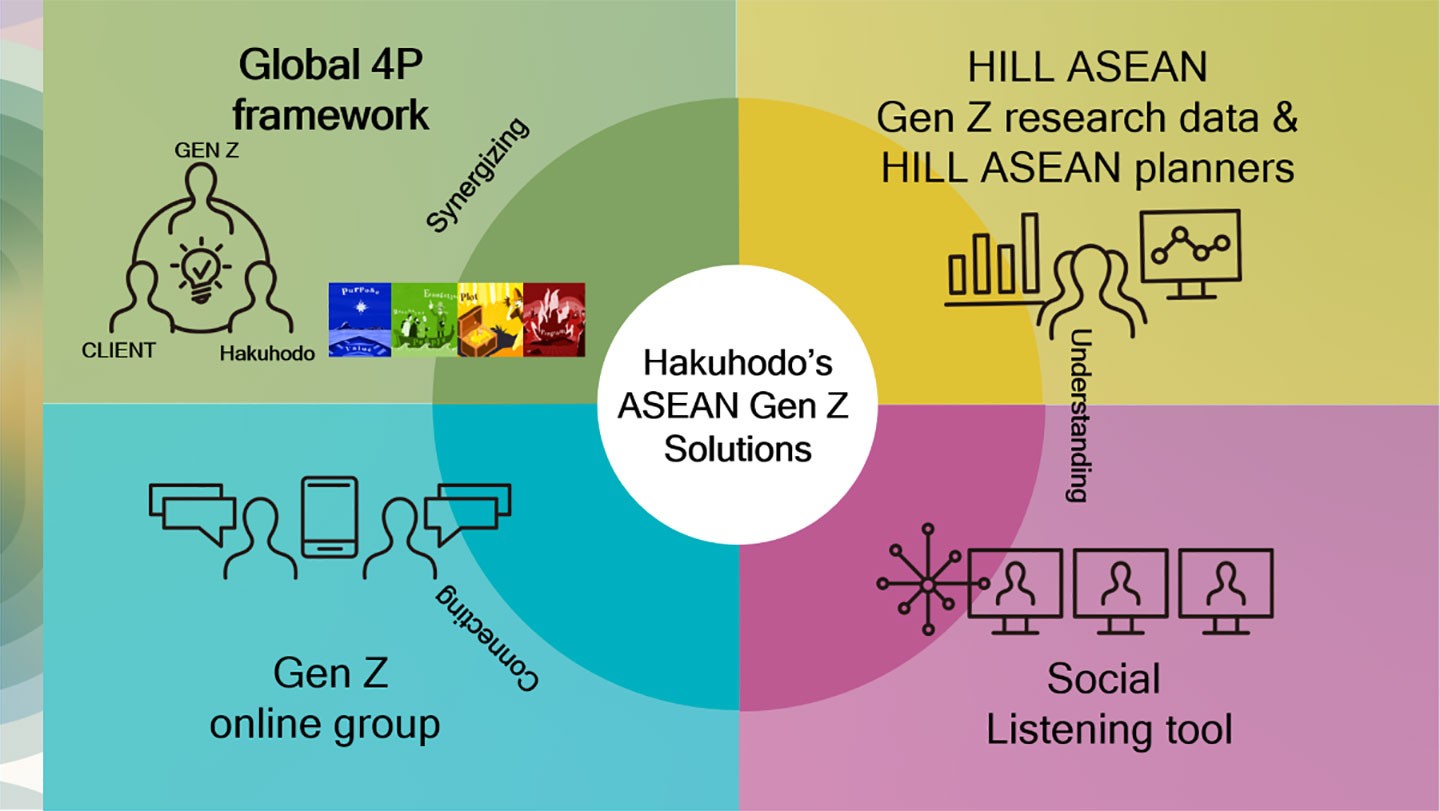
Yuko closed the program and thanked everyone for their time at this highly informative—not to mention myth-busting—forum.








